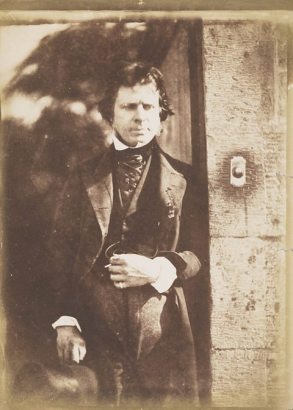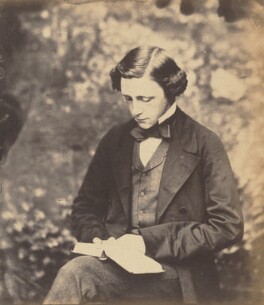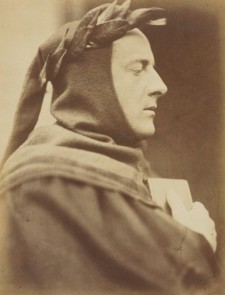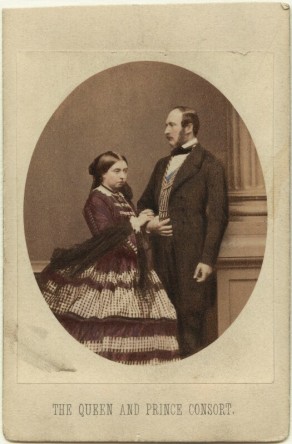PROJECT 1: HISTORIC PORTRAITURE
RESEARCH
The history of portrait photography is tied up with the technical developments in photography. In the nineteenth century the portrait was associated with oil painting, yet the development of photography enabled an instantaneous capture of a portrait, rather than one over time. Initially photographic portraiture had many similarities with painting portraiture, indicating the status and the subject’s personality. In the 1840s and 1850s the daguerreotype proved a good medium for portraiture, each was unique producing a single image and was a mirror image of how others see someone (Clarke, 1997, p 103). They were however very formal partly because of the long exposures. Fox Talbot’s discovery of a way to accelerate the development process for photographs using gallo-nitrate of silver (patented as calotype) enabled portraits to be taken more easily in moderate daylight. Hill and Adamson took advantage of the lack patent for the calotype in Scotland and made thousands of portraits both inside and out of their shop; Hill the painter’s skill at lighting and composition and Adamson’s technical ability produced large scale, artistically posed and sensitively blurred portraits, though people did not like the graininess of them and though expressive they lacked the precisely defined miniature images of the daguerreotype (Tagg, 2007).

David Octavius Hill, 1802-1870. Artist and pioneer photographer, circa 1843 (BBC, 2017)
The faster and improved quality of the wet collodion process (1851) developed by Frederick Scott Archer revolutionised commercial photography was used by photographers such as Lewis Carroll, David Wilkie Wynfield and Margaret Cameron in more self-reflective portraits or self-portraits.
Julia Margaret Cameron’s (1815-79) work like much nineteenth century photography was affected by painting, however her work was also influenced by the language of literature and in particular poetry; she had Alfred Tennyson as a neighbour and as such had ready access to his famous visitors for her photographs. GF Watts the Victorian painter and sculptor said that “I wish I could paint such a picture as this” (NPG, 2017 1), see below.
GF Watts (Collections.vam.ac.uk, 2017)
Lewis Caroll described Cameron’s photos as being taken out of focus, she described her purpose as to use photography as high art.

Carroll (Npg.org.uk, 2017 2)
It seems that through her photographs she reinforced the sexual stereotypes of the time. As in the portrait below or Sir John Herschel the royal astronomer, the head staring directly at the camera, is shown without reference to external factors in a background, so that it “becomes an iconic presence implying intelligence, individualism, and above all, genius” (Clarke,1997, p 105).

(The Met’s Heilbrunn Timeline of Art History, 2017)
This contrasts with her portraits of women, such as Mary Hillier below where they look passively away from the camera.

(Collections.vam.ac.uk, 2, 2017)
Cameron was influenced by the portraits of Wilkie Wynfield, such as the one of the artist Sir John Everett Millais below posing as Dante the renaissance poet, she called his work inspirational ( NPG 2017).

(Npg.org.uk, 3, 2017)
Gaspard Felix Tournachon (1820-1910) known as Nadar was a former writer and caricaturist with a traditional idea of portraiture, painstaking lighting and subtle poses where there was the interrelationship of clients and patrons (Tagg, 2007). His subjects were often bohemian writers, artists or politicians who he identified with. He said “ what cannot be learnt is the sense of light, an artistic feeling for the effects of varying luminosity and combinations of it, the application of this or that effect to the features, which confront the artist in you” (Tagg, ,p53). Nadar concentrated on what he called the inner being of a subject, by focusing on the figure/character only eliminating anything extraneous. His portraits are studio based usually with a plain background.

Rossini albumen print (NPG, London) (The Met’s Heilbrunn Timeline of Art History, 2017)
The rise of the middle and lower classes created a demand for portraits and they were needed in greater quantity. When Andre Disderi patented the “carte-de-viste” photograph, where multiple poses could be taken on the same negative it created a new craze in self-likeness portraits which took over from the previous art of the miniature painters (National Portrait Gallery, 2017). Both Napoleon and Queen Victoria had their portraits published as Carte-de-visite, using this method so that the public could have their images. Portrait photography was also useful to painters who could utilise them when painting as aide memoirs.

(Npg.org.uk, 4, 2017)
Early photographic portraits relied heavily on the conventions of the painted portrait, using pillars and swathes of drapery in the backgrounds and symbols of wealth or signs of individual’s occupations, such as Maull and Polyblank. Commercial photographers such as Maull and Polybank made celebrity photographs that were more rigid than Cameron or Wyneld’s work, inspired by Old master and Italian Renaissance paintings with poses in period costume.

(Npg.org.uk, 5, 2017)
In the late 1870s the development of dry plate methods meant that portraits could be made away from the darkroom and the appearance of handheld cameras and the 1880s particularly the Kodak enabled people to take their own informal photographs which further evolved photo portraiture.
References
BBC. (2017). BBC Arts – How pioneers Hill and Adamson created startlingly modern photographs – BBC Arts. [online] Available at: http://www.bbc.co.uk/programmes/articles/88lkfqP8cSdr0w97kD6p3r/how-pioneers-hill-and-adamson-created-startlingly-modern-photographs [Accessed 9 Oct. 2017].
Clarke, G. (1997). The photograph. Oxford: Oxford University Press.
Collections.vam.ac.uk. (2017). G. F. Watts | Cameron, Julia Margaret | V&A Search the Collections. [online] Available at: https://collections.vam.ac.uk/item/O191690/g-f-watts-photograph-cameron-julia-margaret/ [Accessed 9 Oct. 2017].
Collections.vam.ac.uk. 2, (2017). ‘Call, I Follow, I Follow, Let Me Die!’ | Cameron, Julia Margaret | V&A Search the Collections. [online] Available at: http://collections.vam.ac.uk/item/O77428/call-i-follow-i-follow-photograph-cameron-julia-margaret/ [Accessed 9 Oct. 2017].
National Portrait Gallery. (2017). Portrait Photography from the Victorians to the present day. [online] Available at: https://www.npg.org.uk/assets/files/pdf/learning/schools_wide_angle.pdf [Accessed 7 Oct. 2017].
Npg.org.uk. 2 (2017). Portrait – National Portrait Gallery. [online] Available at: http://www.npg.org.uk/collections/search/portrait/mw01888/Lewis-Carroll?search=sp&sText=p7%2826%29&firstRun=true&rNo=0 [Accessed 7 Oct. 2017].
Npg.org.uk. 3 (2017). Large Image – National Portrait Gallery. [online] Available at: http://www.npg.org.uk/collections/search/portraitLarge/mw04411/Sir-John-Everett-Millais-1st-Bt?search=sp&sText=p79&firstRun=true&rNo=0 [Accessed 7 Oct. 2017].
Npg.org.uk. 4 (2017). Large Image – National Portrait Gallery. [online] Available at: http://www.npg.org.uk/collections/search/portraitLarge/mw138434/Queen-Victoria-Prince-Albert-of-Saxe-Coburg-Gotha?search=sp&sText=ax46717&firstRun=true&rNo=0 [Accessed 7 Oct. 2017].
Npg.org.uk. 5 (2017). Large Image – National Portrait Gallery. [online] Available at: http://www.npg.org.uk/collections/search/portraitLarge/mw00476/Isabella-Beeton-Mrs-Beeton?LinkID=mp00351&search=sas&sText=isabella+mary+beeton&role=sit&rNo=1 [Accessed 7 Oct. 2017].
Tagg, J. (2007). The burden of representation. Basingstoke: Palgrave MacMillan.
The Met’s Heilbrunn Timeline of Art History. (2017). Gioacchino Rossini | Nadar (Gaspard Félix Tournachon) | 1993.233 | Work of Art | Heilbrunn Timeline of Art History | The Metropolitan Museum of Art. [online] Available at: https://www.metmuseum.org/toah/works-of-art/1993.233/ [Accessed 10 Oct. 2017].
